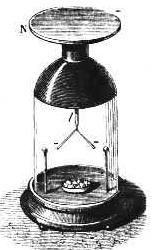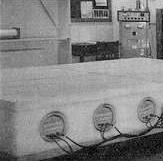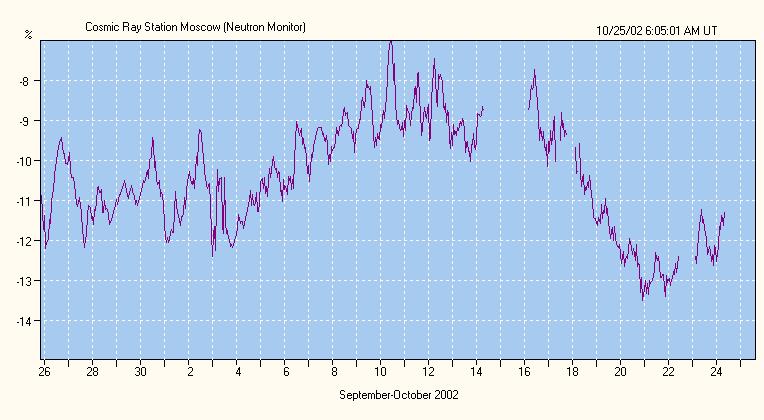Cosmic Rays
In the last decade of the nineteenth century, scientists began investigating ionising radiation. The most common instrument used was an electroscope, a device invented by Jean Nollet in 1748.
The electroscope consists of an insulated container in which are suspended two very light conductors. The conductors are joined at a common point to a rod that is led vertically out of the container to a metal disc.
When the electroscope is charged, the conductors fly apart as shown in the diagram below.

When a radioactive substance was brought near the charged electroscope, the conductors would slowly collapse together, the rate of collapse being proportional to the level of ionising radiation present.
Early experimenters discovered that even when all radioactive materials were removed, the conductors would still collapse.
Even when the best efforts were made to insulate the electroscope from the environment, this inevitable discharge would occur. It was thought that natural radioactive materials in the ground might be responsible. To test this hypothesis, Victor Hess took an electroscope up in a balloon in 1912.
As expected, the radiation level appeared to decrease with distance from the ground - at least up to about 1 km in altitude. However, above this point, the radiation increased, until at the maximum height reached of 5 km, the radiation level was almost three times the ground level radiation. It appeared that some ionising radiation must be coming from space. This marked the discovery of cosmic rays.
Cosmic rays or Galactic Cosmic Radiation (GCR) are in fact particles, mainly protons, which come from well outside the solar system. This radiation represents the highest energy particles known, with energies up to 1020 eV, many orders of magnitude greater than the particles produced in the world's largest particle accelerators. A smaller and much more variable component comes from the Sun and is termed Solar Cosmic Radiation (SCR).
Cosmic ray detectors are operated by the Australian Antarctic Division at Mawson (Antarctica) and Kingston (Hobart). These detectors actually monitor neutrons, which are the result of a cosmic ray particle entering and interacting with the Earth's atmosphere. View the cosmic ray data from these neutron monitors.

Construction of a typical neutron monitor (Bartol Inst)

Cosmic ray data from a neutron monitor near Moscow





